As you delve into the world of carnivorous plants, you’ll discover the fascinating butterwort plant, also known as Pinguicula. With approximately 80 known species existing globally, this plant has adapted to its environment in a remarkable way. The butterwort plant’s leaves excrete a sticky fluid that attracts and traps insects, providing the plant with the necessary nutrients to survive.

The butterwort plant’s unique characteristics and low-maintenance requirements make it a popular choice among plant enthusiasts. You’ll find that the leaf length of butterworts ranges from 2 to 30 cm, and they can trap small insects and those with large wing surfaces. They can also digest pollen that lands on their leaf surface, making them a fascinating species to explore.
Table of Contents
What is the Butterwort Plant?
The butterwort plant, a type of carnivorous plant, has unique characteristics that set.ARRAY it apart from other plants. With its bright yellow-green leaves that excrete a sticky fluidьте, it attracts and traps insects, providing essential nutrients for growth. This adaptation allows the plant to thrive in environments with poor soil quality.

When growing butterworts, it’s essential to understand their unique needs. As a carnivorous plant, the butterwort plant has evolved to obtain nutrients by capturing and digesting insects. This process is facilitated by the plant’s sticky leaves, which trap small insects such as fruit flies and gnats.
Some key characteristics of the butterwort plant include:
- Sticky glandular leaves that capture small insects
- Ability to thrive in environments with poor soil quality
- Unique adaptation to obtain nutrients through insect capture
With over 120 species of butterworts, each with its unique characteristics, growing these plants can be a rewarding experience. From the Spanish butterwort to the alpine butterwort, each species has its own distinct features. By understanding the needs of these plants, you can successfully grow and care for your own butterwort plant, enjoying the unique benefits of these carnivorous plants.
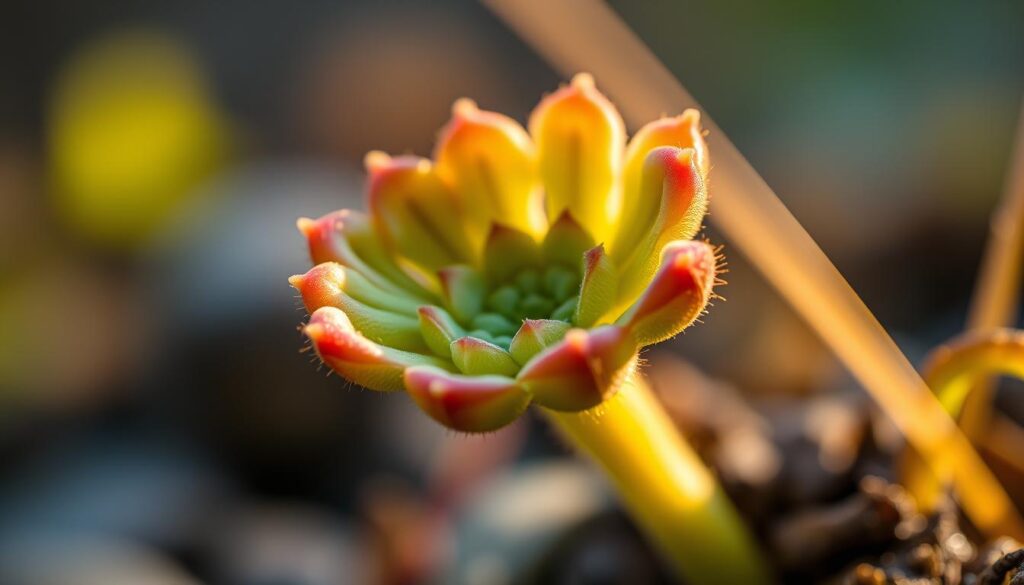
Growing Conditions for Butterwort
To grow a healthy butterwort plant, you need to replicate its natural habitat. The plant thrives in well-draining soil that is low in nutrients. You can create a suitable soil mix by combining 1 part peat moss, 3 parts perlite, and 1 part vermiculite. Alternatively, a simpler mix of 1 part peat moss and 2 parts perlite can also work. When it comes to care tips for butterwort plant, it’s essential to remember that the soil should be changed yearly to prevent mineral build-up.
In terms of sunlight requirements, butterworts prefer full sun to partial shade. If you’re growing the plant indoors, you can use 6500k fluorescent lights positioned 6-8 inches away for 14-16 hours daily. To find the right balance, you can start by placing the plant in a spot with bright, indirect light and adjust as needed. If you’re looking for where to buy butterwort plant, you can try specialty plant stores or online retailers that specialize in carnivorous plants.
Here are some key factors to consider when creating a suitable environment for your butterwort plant:
- Humidity: Maintain high humidity levels to mimic the plant’s natural habitat.
- Temperature: Keep the temperature consistent, with most species preferring temperatures between 65-85°F (18-30°C).
- Watering: Use pure, mineral-free water, such as rainwater or distilled water, and water daily, allowing the soil to dry slightly between waterings.
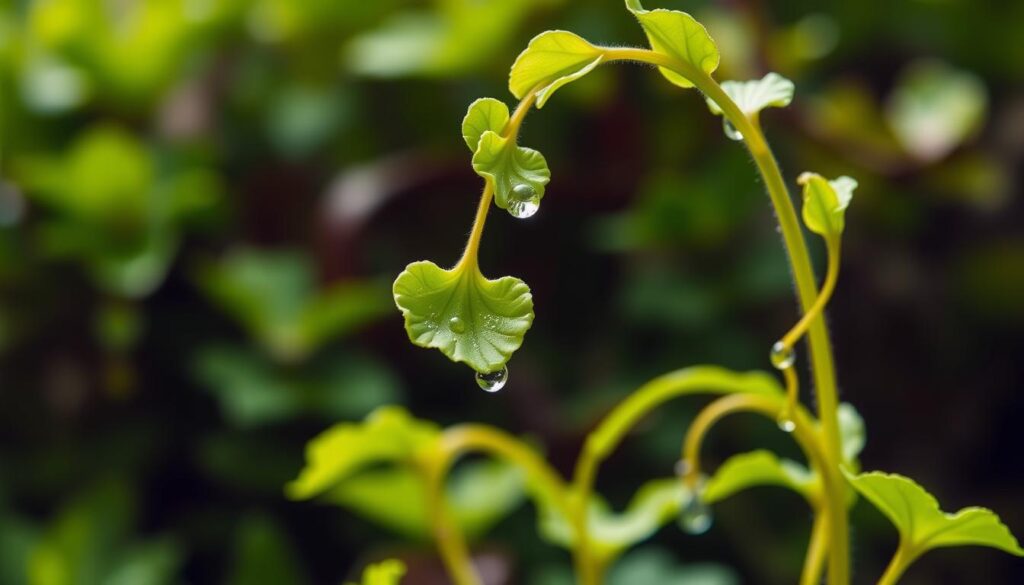
By following these care tips for butterwort plant and understanding where to buy butterwort plant, you can create a thriving environment for your butterwort to grow and flourish.
| Soil Mix | Lighting | Watering |
|---|---|---|
| 1 part peat moss, 3 parts perlite, 1 part vermiculite | Full sun to partial shade | Pure, mineral-free water, daily |
How to Care for Butterwort Plants
When it comes to caring for butterwort plant varieties, it’s essential to understand their unique characteristics and needs. Butterwort plant characteristics, such as their ability to thrive in low-nutrient environments, make them a fascinating and rewarding plant to care for.
To keep your butterwort plants healthy and thriving, you’ll need to provide them with the right environment and care. This includes using distilled water, as tap water can contain too many minerals and nutrients that can harm the plant. You should also avoid using traditional fertilizers, as they can be too harsh for the plant.
Watering Guidelines
Watering is a critical aspect of caring for butterwort plants. You should water your plants with distilled water, and make sure that the soil is consistently moist but not waterlogged. It’s also essential to use a well-draining potting mix to prevent water from accumulating in the soil.
Fertilization Tips
When it comes to fertilizing your butterwort plants, it’s best to use a balanced, water-soluble fertilizer that is specifically designed for carnivorous plants. This will provide your plants with the nutrients they need to thrive without causing harm.
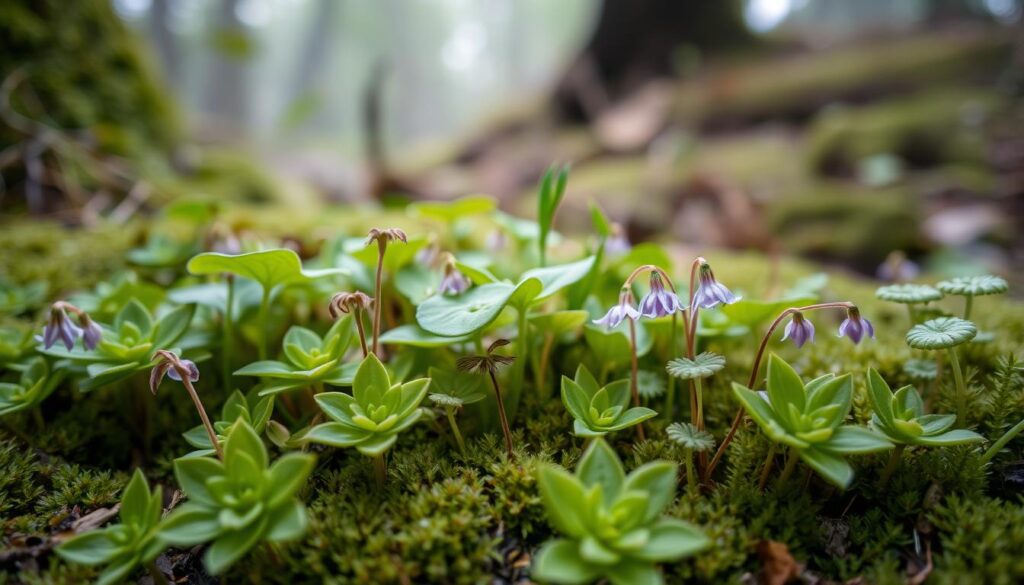
Pruning and Maintenance
Regular pruning and maintenance are essential for keeping your butterwort plants healthy and thriving. This includes removing dead or dying leaves, and trimming back the plant to maintain its shape and size. By following these tips and understanding the unique characteristics of butterwort plant varieties, you can keep your plants happy and healthy.
Some key things to keep in mind when caring for butterwort plants include using mineral-free water, providing the right amount of sunlight and humidity, and fertilizing sparingly. By following these guidelines and understanding the unique butterwort plant characteristics, you can enjoy the beauty and unique characteristics of these fascinating plants.
Butterfly Attraction: Why Butterwort?
The Unique Traits that Attract Butterflies to the butterwort plant are quite fascinating. As a carnivorous plant, it has adapted to obtain essential nutrients by trapping insects, which also attracts pollinators like butterflies. The butterwort plant care guide suggests that the plant’s bright yellow-green leaves and purple flowers are attractive to butterflies, making it a great choice for anyone who wants to attract these beautiful creatures to their garden.
One of the interesting aspects of the butterwort plant is its ability to balance its carnivorous nature with its need for pollinators. The plant’s sticky leaves trap insects, which are then digested by the plant, providing it with the necessary nutrients to thrive. This unique adaptation makes the butterwort plant a great example of a carnivorous plant that has evolved to survive in nutrient-poor environments.
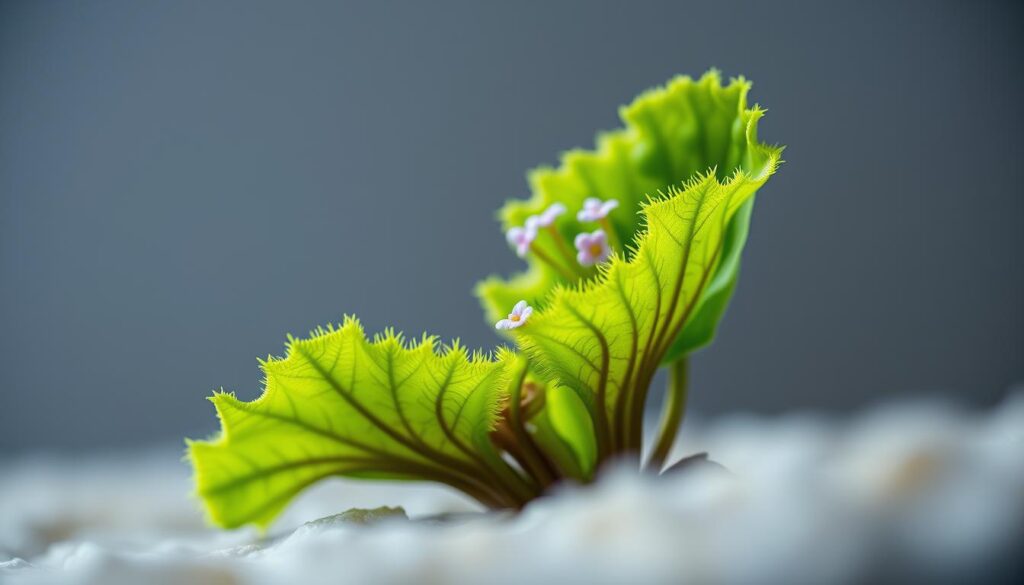
Some of the key factors that contribute to the butterwort plant’s ability to attract butterflies and other pollinators include:
- Visual cues like vibrant colors and scents released by the flowers
- Wind, insect activity, and gravity, which facilitate pollen transfer
- A diverse pollination strategy that includes bees, butterflies, and moths
By understanding these factors, you can create a butterwort plant care guide that helps you attract butterflies and other pollinators to your garden, while also providing the necessary care for your carnivorous plant.
Propagation Methods for Butterwort
When it comes to growing butterworts, one of the most exciting aspects is propagating these unique plants. With several methods to choose from, including seed propagation, division, and leaf cuttings, you can easily share your favorite butterwort plant varieties with fellow enthusiasts or expand your own collection.
For those interested in growing butterworts, understanding the different propagation methods is crucial. Each method has its advantages and disadvantages, and the choice of method depends on your specific needs and goals. Whether you’re looking to propagate a rare species or simply want to share plants with friends, there’s a method that’s right for you.
Some key considerations for propagating butterworts include:
- Using a well-draining soil mix to prevent root rot
- Providing the right amount of humidity and temperature for optimal growth
- Ensuring the soil is consistently moist but never soggy
By following these guidelines and choosing the right propagation method for your needs, you can successfully grow and share your favorite butterwort plant varieties. With a little patience and practice, you’ll be enjoying the unique beauty of these plants in no time.
| Propagation Method | Description |
|---|---|
| Seed Propagation | Involve sowing seeds in a well-draining soil mix and providing the right conditions for germination |
| Division | Involve dividing the plant into smaller sections and replanting them |
| Leaf Cuttings | Involve cutting a leaf from the plant and rooting it in a well-draining soil mix |
Pests and Diseases Affecting Butterwort
As you care for your butterwort plant, it’s essential to be aware of the common pests and diseases that can affect its health. Regular inspection of the plant is crucial to detect any signs of pests or diseases early on. By taking these precautions, you can keep your butterwort plant healthy and thriving, and ensure you’re providing the best care tips for butterwort plant.
Some common pests that affect butterwort plants include aphids, spider mites, and mealybugs. These pests can produce honeydew, which can contribute to the formation of sooty mold, negatively impacting photosynthesis and plant health. To protect your plant from these pests, you can use insecticidal soap or neem oil, and make sure to inspect the underside of leaves where pests prefer to hide. Understanding butterwort plant characteristics is vital in identifying potential issues and taking preventive measures.
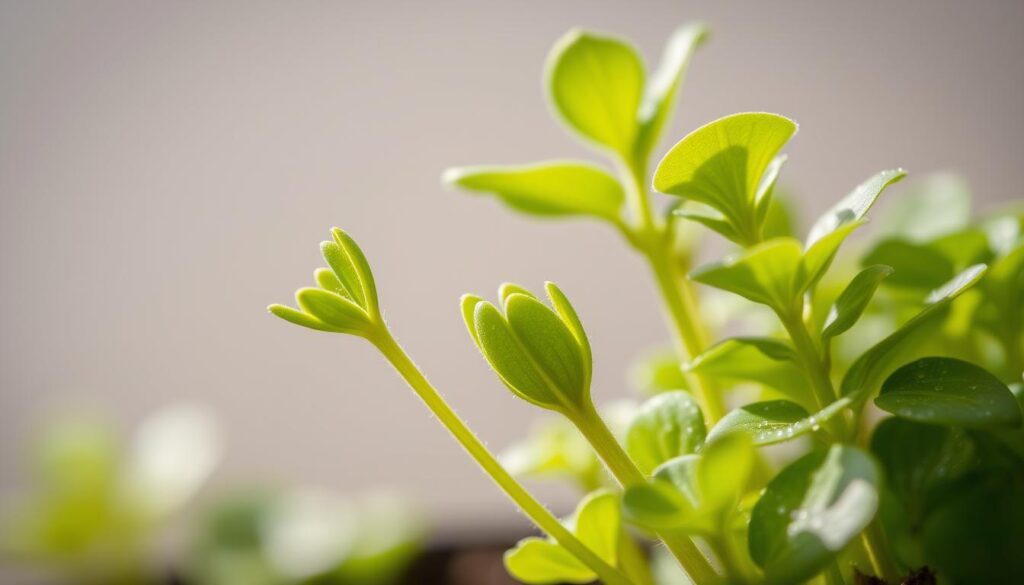
To prevent diseases, it’s essential to maintain consistent moisture and avoid overwatering, which can lead to root rot. Healthy roots are characterized by firmness, and if roots are mushy, this is indicative of overwatering and potential rot. By following these care tips for butterwort plant and being mindful of butterwort plant characteristics, you can enjoy the unique benefits of having a healthy and thriving butterwort plant.
Some key strategies for preventing pests and diseases include:
- Using clean, fresh soil and avoiding nitrogen-rich fertilizers
- Providing bright, indirect light and avoiding excessive direct sunlight
- Watering carefully to avoid overwatering and root rot
- Inspecting the plant regularly for signs of pests or diseases
By taking these steps, you can help keep your butterwort plant healthy and thriving, and enjoy the many benefits of having this unique and fascinating plant in your care.
Butterwort in Culinary Uses
The butterwort plant, also known as Pinguicula, has been a part of various cuisines for centuries. You can use its leaves and flowers in salads, soups, and other dishes, adding a unique flavor and texture. With over 80 different species of Pinguicula plants, there’s a wide range of options to choose from.
Some of the key characteristics of butterwort plants that make them suitable for culinary use include their ability to thrive in a variety of environments and their unique insectivorous attributes. The leaves of the butterwort plant are covered with sticky slime, which helps to catch small insects, providing a natural source of protein.
Edible Varieties Overview
Butterworts are native to every continent except Australia and Antarctica, and they can range in size from as small as 1 inch tall and 1.5 inches wide to as large as 18 inches in height and 12 inches wide. The flowers of butterworts can exhibit various colors, including yellow, gold, purple, red, pink, or white.
Preparation and Cooking Tips
Historical accounts suggest that Northern Europeans have used butterwort’s antibacterial properties for centuries for sterilizing wounds. In Scandinavian folklore, the use of butterwort leaves in the fermentation of milk for products like tettemelk is mentioned, indicating a long-standing practical application in traditional culinary practices. Here are some tips for preparing and cooking with butterwort:
- Use the leaves and flowers in salads, soups, and other dishes for a unique flavor and texture.
- Combine butterwort with other ingredients to create a delicious and exotic meal.
- Experiment with different species of Pinguicula plants to find the one that suits your taste preferences.
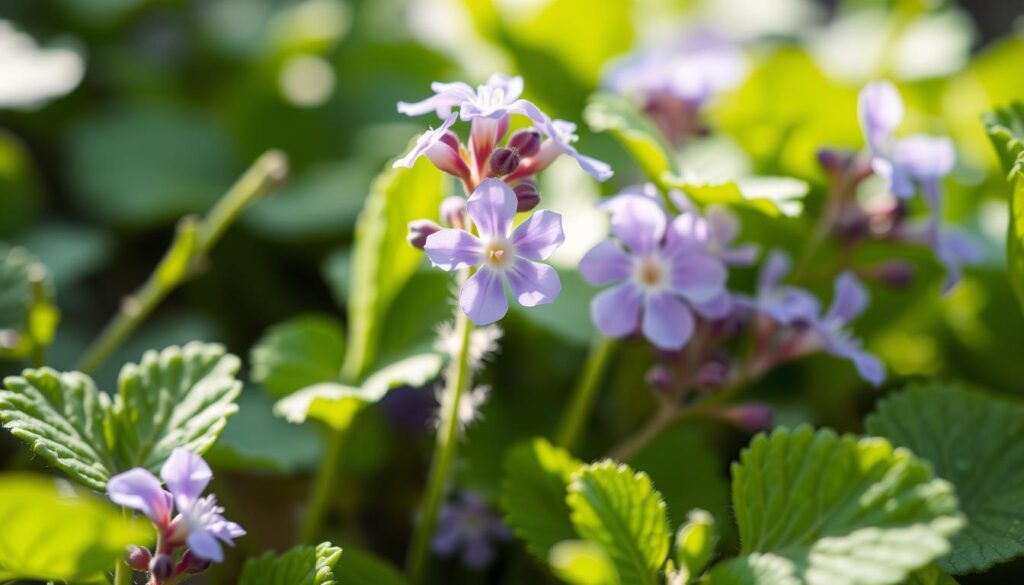
By incorporating the butterwort plant into your culinary repertoire, you can add a new level of excitement and variety to your meals. With its unique characteristics and flavors, butterwort is a great choice for anyone looking to try something new and exotic.
| Species | Flower Color | Leaf Size |
|---|---|---|
| Pinguicula moranensis | Purple | 2-4 cm |
| Pinguicula agnata | Yellow | 1-3 cm |
| Pinguicula gigantea | White | 4-6 cm |
Medicinal Properties of Butterwort
The butterwort plant has been used in traditional herbal medicine for centuries, particularly in Europe and Asia. As part of a butterwort plant care guide, it’s essential to understand the plant’s medicinal properties. The leaves and flowers of the butterwort plant have been used to treat various health conditions, including digestive problems and skin issues.
As a carnivorous plant, the butterwort plant has a unique combination of compounds, including flavonoids, phenolic acids, and terpenes. These compounds have been shown to have anti-inflammatory, antimicrobial, and antioxidant effects, making the butterwort plant a great choice for anyone looking for a natural remedy for common health issues.
Some of the traditional uses of the butterwort plant include:
- Treating respiratory problems, such as coughs and bronchitis
- Relieving digestive disorders, such as diarrhea and constipation
- Soothing skin conditions, such as eczema and acne
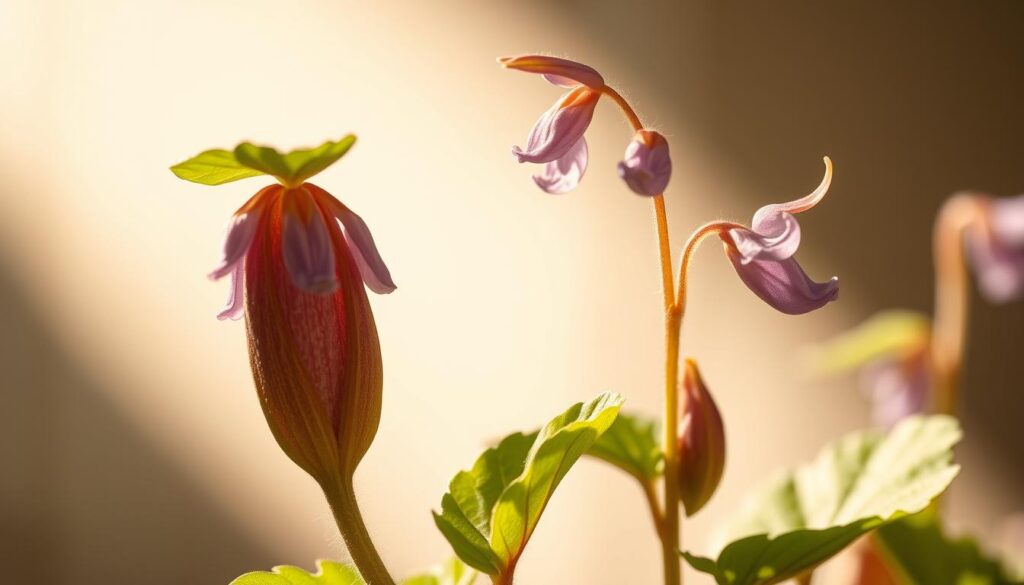
While the butterwort plant has been used in traditional medicine for centuries, it’s essential to note that more research is needed to fully understand its medicinal properties and potential uses. However, as part of a comprehensive butterwort plant care guide, understanding the plant’s medicinal properties can help you appreciate its value and potential benefits.
| Medicinal Property | Compound | Effect |
|---|---|---|
| Anti-inflammatory | Flavonoids | Reduces inflammation and pain |
| Antimicrobial | Phenolic acids | Prevents the growth of microorganisms |
| Antioxidant | Terpenes | Protects against cell damage and oxidative stress |
Butterwort in Popular Culture
The unique appearance and properties of the butterwort plant have made it a popular subject in literature and art. You can find representations of butterworts in various forms of media, from novels to photographs. If you’re interested in growing butterworts, you might be inspired by their appearances in popular culture.
Butterworts have been featured in literary works, often symbolizing their unique characteristics. They have also been the subject of numerous art pieces and photographs, showcasing their captivating appearance. If you’re looking for a where to buy butterwort plant, you might stumble upon some beautiful artwork featuring these plants.
In addition to their appearances in literature and art, butterworts have also been featured in various other forms of media. They have been used as a symbol in different cultures, representing their unique characteristics and properties. Whether you’re interested in growing butterworts or simply learning more about these fascinating plants, their appearances in popular culture are sure to captivate and inspire you.
Some notable examples of butterworts in popular culture include:
- Features in botanical gardens and exhibitions
- Appearances in floral arrangements and designs
- Inspiration for artistic creations, such as paintings and sculptures
These examples demonstrate the significant impact of butterworts on popular culture, making them a beloved and intriguing subject for many people.
Environmental Benefits of Growing Butterwort
As you consider adding butterwort plant varieties to your garden, you may be interested to know about the environmental benefits they provide. By growing butterwort, you are supporting local ecosystems and enhancing soil health. The unique characteristics of the butterwort plant make it an ideal choice for those looking to create a sustainable and environmentally friendly garden.
The butterwort plant helps to support local ecosystems by providing a source of food for insects and other wildlife. This is especially important for maintaining a balanced ecosystem, as it allows other species to thrive. Additionally, the plant’s roots help to hold the soil in place, reducing the risk of landslides and erosion. This is particularly beneficial for areas with loose or unstable soil, as it helps to prevent soil degradation.
Supporting Local Ecosystems
Butterwort plant characteristics, such as its ability to thrive in nutrient-poor soils, make it an excellent choice for supporting local ecosystems. By growing butterwort, you are providing a habitat for various species of insects and animals, which can help to maintain a balanced ecosystem. This is especially important for areas with limited biodiversity, as it can help to introduce new species and promote ecological balance.
Enhancing Soil Health
Butterwort plant varieties also help to enhance soil health by adding organic matter and reducing erosion. The plant’s leaves help to add organic matter to the soil, improving its fertility and structure. This is especially beneficial for areas with poor soil quality, as it can help to improve soil health and promote healthy plant growth. By growing butterwort, you are taking a step towards creating a more sustainable and environmentally friendly garden.
Common Misconceptions About Butterwort
As you delve into the world of butterwort plants, you may come across some common misconceptions about their care and maintenance. One of the most prevalent myths is that butterwort plants are difficult to care for, requiring a lot of water and attention. However, with the right care tips for butterwort plant, you can easily keep your plant thriving.
A butterwort plant care guide would typically recommend well-draining soil and sparse watering, allowing the plant to absorb the necessary moisture without becoming waterlogged. By following these simple guidelines, you can enjoy the unique beauty and benefits of your butterwort plant.
Some other common misconceptions about butterwort plants include their susceptibility to pests and diseases. While it is true that these plants can be affected by certain issues, a proper care tips for butterwort plant can help prevent these problems. Regular inspections and balanced watering can go a long way in keeping your plant healthy.
To further clarify these misconceptions, here are some key points to keep in mind:
- Butterwort plants prefer bright, indirect light to prevent sunburn.
- Soil moisture should be maintained at a level analogous to a wrung-out sponge—moist, but not soggy.
- Watering should be conducted early in the day, allowing leaves to dry before evening to minimize fungal disease risks.
By understanding and addressing these common misconceptions, you can provide your butterwort plant with the best possible care and enjoy its unique benefits. With the right butterwort plant care guide, you can keep your plant thriving and appreciate its beauty for years to come.
Resources for Butterwort Enthusiasts
As a butterwort plant enthusiast, you’ll find a wealth of resources to delve deeper into these fascinating carnivorous wonders. Recommended books like “The Carnivorous Plant Guide” and “The Butterwort Plant Care Handbook” offer in-depth information on Pinguicula species and their cultivation. Online communities such as the Carnivorous Plant Society and the Butterwort Plant Forum provide platforms for you to connect with fellow gardeners, share experiences, and learn from the collective knowledge of the community.
Whether you’re a seasoned butterwort grower or just starting your journey, these resources can help you unlock the secrets of successfully cultivating and caring for your Pinguicula plants. Explore the unique adaptations, propagation techniques, and environmental benefits of these captivating carnivorous plants. With the right guidance and a little patience, you can create a thriving butterwort oasis in your own garden or indoor space.
FAQ
What is the butterwort plant?
The butterwort plant, also known as Pinguicula, is a unique and fascinating carnivorous plant that has adapted to thrive in poor soil conditions. Its leaves excrete a sticky fluid that attracts and traps insects, providing the plant with essential nutrients.
What are the common species of butterwort plants?
There are several species of butterwort plants, each with its own unique characteristics and growing requirements. The plant is classified as a member of the Lentibulariaceae family, which includes other carnivorous plants like the bladderwort and sundew.
What are the ideal growing conditions for a butterwort plant?
Butterwort plants prefer well-draining soil that is low in nutrients, full sun to partial shade, and a humid environment with a consistent temperature range. They require special care and attention to thrive in a home setting.
How do I care for a butterwort plant?
Caring for a butterwort plant involves using distilled water, avoiding traditional fertilizers, and regularly pruning and maintaining the plant. It’s important to monitor the plant’s needs and adjust the care accordingly to keep it healthy and thriving.
Why are butterwort plants attractive to butterflies?
Butterwort plants are attractive to butterflies due to their bright yellow-green leaves and purple flowers, as well as their ability to trap insects that provide a food source for these beautiful creatures.
How can I propagate a butterwort plant?
There are several methods for propagating butterwort plants, including seed propagation, division, and leaf cuttings. Each method has its own advantages and disadvantages, and the choice will depend on the specific needs and goals of the grower.
What pests and diseases affect butterwort plants?
Butterwort plants can be susceptible to spider mites, mealybugs, and root rot. To protect the plant, it’s essential to use organic pest control methods and regularly inspect the plant for any signs of pests or diseases.
Can butterwort plants be used in culinary applications?
Yes, the leaves and flowers of certain butterwort plant varieties can be used in salads, soups, and other dishes, providing a unique flavor and texture to the meal.
What are the medicinal properties of the butterwort plant?
The butterwort plant has a long history of use in traditional herbal medicine, with its leaves and flowers being used to treat a variety of health conditions due to their anti-inflammatory, antimicrobial, and antioxidant properties.
How has the butterwort plant been featured in popular culture?
The butterwort plant has been a popular subject in literature, art, and photography, with its unique appearance and carnivorous properties inspiring writers, artists, and photographers alike.
What are the environmental benefits of growing butterwort plants?
Butterwort plants can help support local ecosystems by providing a food source for insects and other wildlife, while also enhancing soil health through their root systems and decomposing leaves.
What are some common misconceptions about butterwort plants?
Common misconceptions about butterwort plants include the belief that they require a lot of water and are prone to pests and diseases. In reality, with the right care and attention, butterwort plants can thrive and be a low-maintenance addition to any garden.
Where can I find resources for learning more about butterwort plants?
There are various resources available for butterwort enthusiasts, including books, guides, and online communities, where gardeners can share their experiences, ask questions, and learn from others about the care and cultivation of these unique carnivorous plants.
Source Links
- Pinguicula – https://en.wikipedia.org/wiki/Pinguicula
- Carnivorous Plants – Big Thicket National Preserve (U.S. National Park Service) – https://home.nps.gov/bith/learn/nature/carnivorous-plants.htm
- Carnivorous plants: the meat-eaters of the plant world | Natural History Museum – https://www.nhm.ac.uk/discover/carnivorous-plants-meat-eaters-of-the-plant-world.html
- Butterwort | Description, Carnivorous Plant, Leaves, Species, & Facts | Britannica – https://www.britannica.com/plant/butterwort
- Basic Butterwort Care Sheet! (Underwork) – FlyTrapCare Forums – https://www.flytrapcare.com/phpBB3/basic-butterwort-care-sheet-underwork-t3600.html
- Grow Cold-Hardy Butterworts – https://www.growcarnivorousplants.com/cold-hardy-butterwort-care/
- Growing Tips for Tropical Butterworts – https://carnivorousplantnursery.com/blogs/general-growing-and-care/growing-tips-for-tropical-butterworts?srsltid=AfmBOorxv15afpLg12VkURaMc1hWQDUkj7yoQKnrHTK-ml7WC4dKAsF7
- Carnivorous Butterwort Care – How To Grow Butterworts – https://www.gardeningknowhow.com/houseplants/butterwort/how-to-grow-butterworts.htm
- 🌸 9 Facts About Gypsum Butterwort Pollination – https://greg.app/pollinate-gypsum-butterwort/
- Common butterwort — Pinguicula vulgaris — Plant in Place – https://www.plantinplace.com/writing/2018/11/21/pinguicula-vulgaris
- PDF – https://courses.washington.edu/esrm412/protocols/2020/PIMA7.pdf
- Propagating Pinguicula laueana ‘Red’: Step-by-Step Guide – https://greg.app/propagate-pinguicula-laueana-red/
- Butterwort (Pinguicula) Care – https://cedarbridgebotanicals.com/blogs/info/butterwort-pinguicula-care
- Some questions and problems with my butterwort – FlyTrapCare Forums – https://www.flytrapcare.com/phpBB3/some-questions-and-problems-with-my-butterwort-t37391.html
- How Can You Tell If A Common Butterwort Is Dying? – https://greg.app/common-butterwort-problems/
- Butterwort Guide – New York Natural Heritage Program – https://guides.nynhp.org/butterwort/
- How to Grow and Care for Butterworts | Gardener’s Path – https://gardenerspath.com/plants/houseplants/grow-butterwort/
- Pinguicula vulgaris Butterwort, Common butterwort PFAF Plant Database – https://pfaf.org/user/Plant.aspx?LatinName=Pinguicula vulgaris
- Pinguicula vulgaris – Useful Temperate Plants – https://temperate.theferns.info/plant/Pinguicula vulgaris
- What is: Butterwort – Suntek Lawn Care – https://sunteklawncare.com/glossario/what-is-butterwort/
- Carnivorous Pinguicula Butterwort – https://orangelakenursery.com/products/butterwort-plug?srsltid=AfmBOorvG9LrLKE1SbOUS-ha9bgo2pqhNAu-4UQq7ejBCXvy1oLWr8zm
- Symbolism and Benefits of the Mexican Butterwort – https://greg.app/mexican-butterwort-benefits/
- Growing Tips for Tropical Butterworts – https://carnivorousplantnursery.com/blogs/general-growing-and-care/growing-tips-for-tropical-butterworts?srsltid=AfmBOoo-X8aVNc8L8FVbf_Z1LB_t70GKNg0fc0Sh3ilvV3s0MVhfVwqD
- 10 Benefits of Having a Common Butterwort 🪰 – https://greg.app/common-butterwort-benefits/
- Common Butterwort is Not Toxic to Dogs – https://greg.app/common-butterwort-toxic-to-dogs/
- Why Are There Brown Spots on My Common Butterwort? – https://greg.app/brown-spots-on-common-butterwort-leaves/
- All About Moctezuma’s Butterwort: Essential Facts 🐛 – https://greg.app/moctezumas-butterwort-overview/
- The International Pinguicula Study Group – https://www.carnivorousplants.org/cp/history/IPSG
- Butterwort – https://sites.google.com/view/butterwort


1 thought on “Explore the Unique Butterwort Plant”